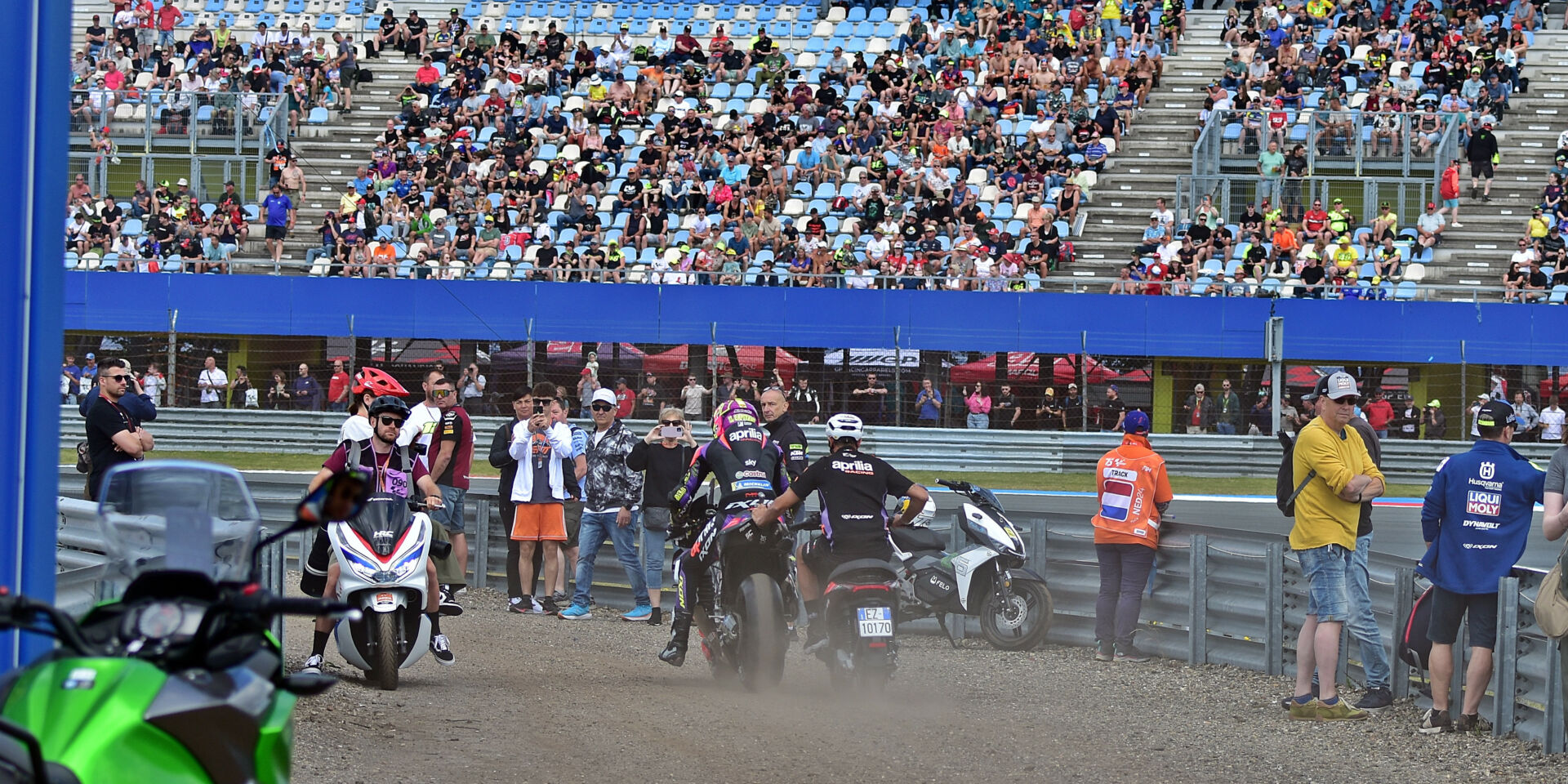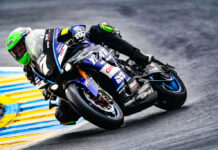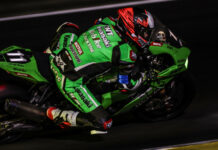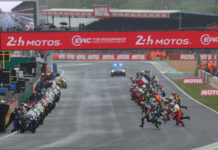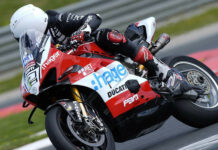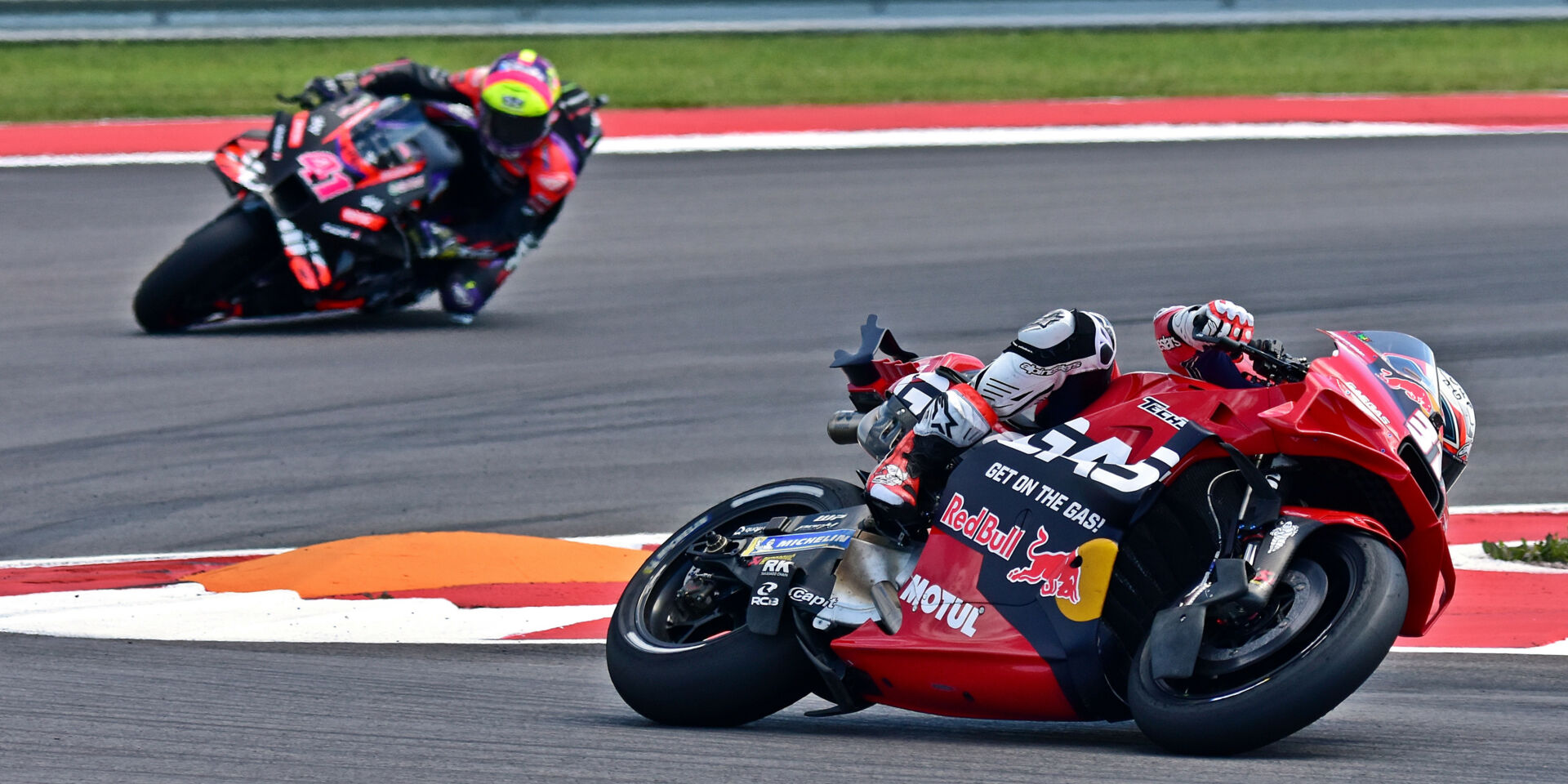First Person/Opinion:
By Michael Gougis
“You can use a knife to play ping-pong!” Romano Albesiano once told me. Aprilia’s MotoGP Technical Director was talking about the swingarm-mounted spoilers that snuck onto MotoGP machines under the explanation that they were “tire cooling” devices. The ping-pong reference was Albesiano’s way of saying that no matter what you called it, it was a spoiler that generated downforce.
The nearly simultaneous news on Friday that Albesiano was moving from Aprilia to Honda, and Fabiano Sterlacchini from KTM to take Albesiano’s place at Aprilia, illustrated that Honda and Aprilia have clear ideas on where they are lacking and how to fix those problems as quickly as possible. The pair have very specific skill sets that correspond to the weaknesses of the Honda RC213V and the Aprilia RS-GP.
Albesiano first. I remember the comment above because it illustrated his ability to see things for what they really are. And if you can see what is happening, you have a chance to fix it or improve it. Remember that it was not long ago that Moto2 riders were turning down offers from Aprilia to race their MotoGP machine–it was that bad. Under Albesiano’s direction, the company swallowed its pride and abandoned the 72-degree V-4 engine it had developed and copied the 90-degree configuration used by Ducati and Honda. More than that, Albesiano was not far behind Ducati’s Luigi “Gigi” Dall’Igna in recognizing the importance of aerodynamics. As one Roadracing World reader wrote in to us, historically most of the work on racebikes focused on flowing gasses through the engine, but it has become equally critical to utilize gasses flowing around the motorcycle.
Albesiano’s most recent RS-GPs have pushed the aerodynamic edge for MotoGP machines. The team perfected the “fat fairing” that created suction under the bike when it was at full lean, pressing the tires into the pavement. Aprilia engineers experimented with fork-mounted wings, NACA ducts on the upper fairing, “bat wing” tail sections, and aero bits everywhere the rules allowed them.
And when everything is right, the bike is every bit the equal of Dall’Igna’s dominant Desmosedici machines. Maverick Vinales simply rode away from the field at Circuit of The Americas earlier this season. In Barcelona last year, at one point, three Aprilias led the Grand Prix race, and the two factory machines finished 1-2.
Albesiano’s overall knowledge of how to configure a winning MotoGP machine is exactly what the struggling Honda team needs. Honda doesn’t have time to learn everything that Albesiano already knows. The RC213V is usually the slowest bike in the field, and its riders say it’s lacking pretty much everywhere. Building a bike that is better everywhere, all at once, is a brutal hill to climb. Albesiano’s hiring is a shortcut. He already knows how all the components of a winning bike work together. It’s usually better to struggle, suffer and learn on your own. But sometimes there’s no time, and desperate measures are needed to end the downward spiral. Losing all the time makes it harder to hire the top-level talent that is needed to reverse the trend. Given a free hand, Albesiano knows how to make a bike that can, occasionally, beat the best in MotoGP. And that is far better than HRC can even dream of right now.
Where Aprilia struggles is consistency. The team can be on another level compared to the competition one weekend and absolutely nowhere the next. And that’s why the company’s hiring of Sterlacchini is a brilliant move. He spent 17 years at Ducati, helping build the structure and processes that allow the Desmosedici’s riders to get on the bike when race time rolls around knowing that it is as perfect as it can get. One of Ducati’s strengths is in its ability to process data and use that to fine-tune the bike, but that points to a bigger strength. And that is the company’s procedures that keep mechanical and set-up issues to a minimum and maximizing the bike’s potential on any given day. When it is set up perfectly, the Aprilia RS-GP is the equal of the Desmosedici. But Ducati’s technicians get their bikes perfect, or close to it, far, far more often than do their counterparts at Aprilia. I was shooting the very first practice session at the Assen TT this year and watched Aleix Espargaro’s Aprilia coast to a halt a few hundred yards after leaving pit lane for the first time. An Aprilia tech cruised out to the first turn on a scooter and pushed him back to the garages. That sort of thing can be crushing for the morale and mentality of everyone on the team, including the riders.
Sterlacchini’s relatively short stint at KTM–he was there from 2021 to 2024–will not have hurt his ability to put into place processes that, hopefully, will eliminate the erratic performances of the Aprilia squad. The KTM is good and improving. But it is the Aprilia that has demonstrated the best raw performance on the track, Ducatis aside. With Jorge Martin signed for next season, the rider puzzle is complete. Aprilia is hoping that Sterlacchini will be able to help put a competitive bike under Martin, week after week. If he can, maybe next season’s MotoGP Championship race won’t be an all-Ducati affair.
